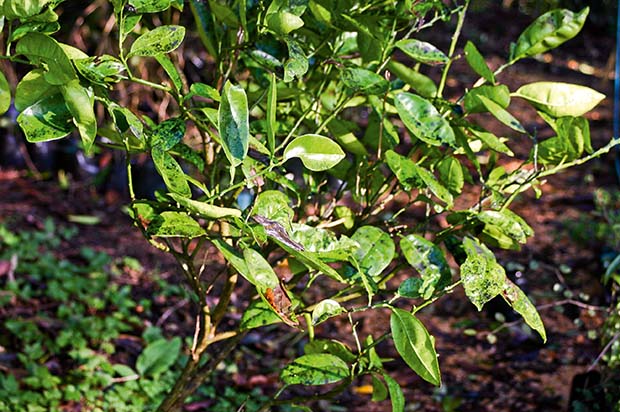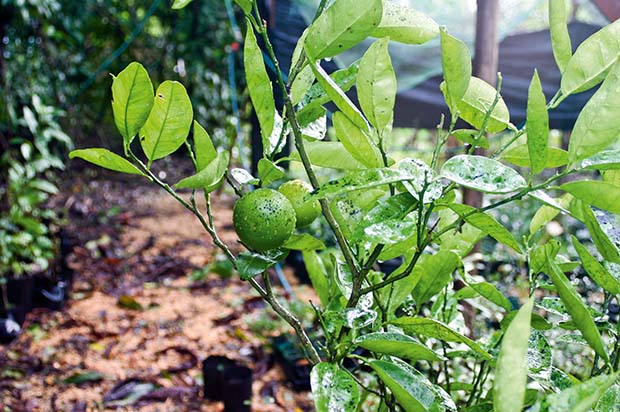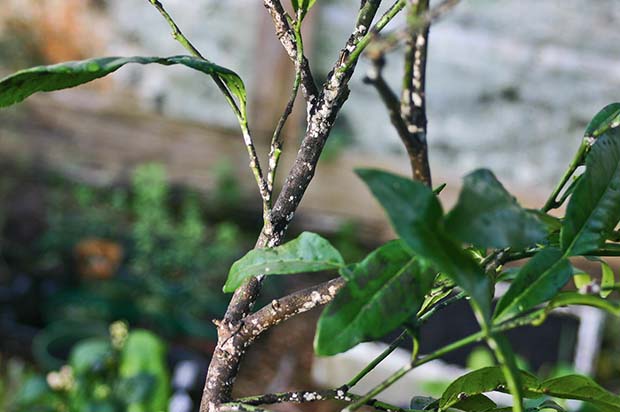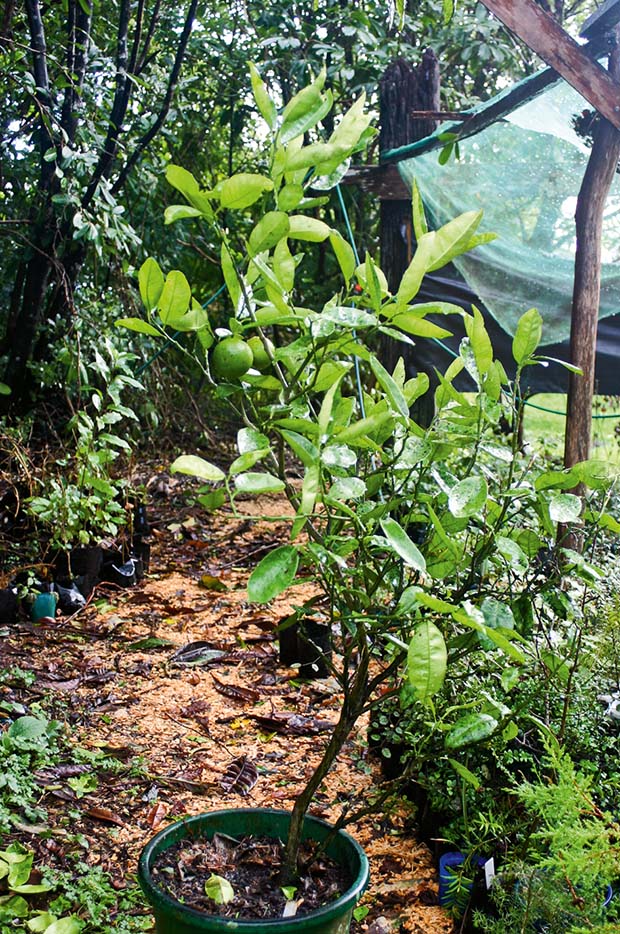6 ways to clean up sorry-looking citrus

A neglected grapefruit tree gets an organic makeover.
Words: Ben Gaia
The picture above is my sorry-looking, neglected Wheeny grapefruit tree: crinkled leaves, sooty mould, probably moth eggs, yet growing well and strongly, flowering and with two large grapefruits forming. So what did I do to help it out?
1. Move and remove
The first step was to sit it outside of the tunnel house and place it into the cool flowing breeze and winter rain. I also picked off all the broken branches, leaves, and lichens, and broke off dead or yellowing leaves.
2. Feed it
The tree sits in a large tub which is regularly fed with soil conditioner and compost. More fertiliser in the tub will boost new leaf and flower growth as spring comes. A feed of magnesium is always a boost for citrus, in the easily applied form of Epsom salts.
Ben’s tip: A citrus tub should be large, not bonsai, giving the roots plenty of room and also a wide surface area to breathe.
3. Oil it

The next step was to spray the leaves with conqueror oil, a water soluble oil, which enables the scale insects which produce the mould to slide off in the next heavy rain. I am risking leaving my citrus outside by tending to it through winter but it will deter pest insects which may have built up inside the tunnel house.
4. Give it a good clean
After spraying and wetting, I cleaned the leaves and branches by hand, rubbing away all the mould and scale insects between finger and thumb. Any crinkly, very buggy, or persistently black leaves should also be removed and any crossover branches or leggy growth trimmed. Long shoots with fruit can be trimmed later after the fruit has been harvested.
Be careful not to get carried away and pluck all the leaves off. You want to allow a free flow of air to the middle of the tree, and remove health hazards and sources of infection and mould. Dry leathery leaves and discoloured leaves can be regularly removed.

Step 4. clean it up
The picture above shows scale-affected stems which must be hand scrubbed and soaked in oil. Work with garden gloves and a small scrubbing brush. Remove those silly little inner branches which clutter up the bush. Rub and squash all insects and caterpillars on the leaves.
Ben’s tip: Thorny citrus can be hazardous when hand cleaning stems, so be careful. Try and plant thornless stock. Remove thorny root stocks shooting from below the graft.
5. Hot spray it
This particular time I then sprayed again with a hot red pepper spray as a deterrent to little moths and whitefly that may be roaming.
“A good drop of rain will wash those leaves and make them shine as if waxed,” I thought. Sure enough, we then immediately had 175mm (7 inches) overnight of a near-horizontal lashing downpour which helped to clean the leaves. Citrus loves that kind of shower.
You will then have to go back and finish rubbing the mould off by hand. While you are doing this, you realise why poison sprays were invented. But carry on, and feel virtuous and healthy.
Ben’s tip: Water your indoor citrus well.

The grapefruit tree is on the mend
6. Warm it up
Before mid-winter or a hard frost, pop it back into the tunnel house to protect the fruit and tender growth until flowering. Tunnel houses don’t get enough frost and wind to clear out some pests, so it is healthy for plants to sit outside for a holiday for a few weeks, preferably in full rain and sun if they will stand it.
But remember, citrus really hate frost, and many types will be burnt and drop dead if it’s more than a couple of degrees below zero. Too much furious hail is not advised either, as it will rip the leaves and bruise the fruit.
You can see the improvement with a few simple old-fashioned remedies. The tree is open and clean, with fewer black leaves and fungal troubles. New branches will form in the summer.
Love this story? Subscribe now!
 This article first appeared in NZ Lifestyle Block Magazine.
This article first appeared in NZ Lifestyle Block Magazine.

